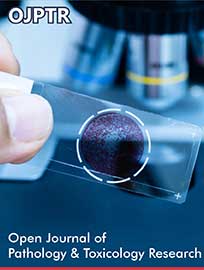 Case Report
Case Report
Caplacizumab Treatment in a Case of Resistant Thrombotic Thrombocytopenic Purpura
Zarrin Hossein-Zadeh1*, Behnam Rafiee1, Bebu Ram1, Jonathan Weltz1 and Mark Friedman1
1Department of Pathology, NYU Langone Long Island, USA
Zarrin Hossein-zadeh, Department of Pathology, NYU Langone Long Island, USA.
Received Date: December 06, 2021; Published Date: December 17, 2021
Abstract
A 27-year-old G2P1 woman, with no significant past medical history admitted at 37 weeks of gestation after complaints of nausea, vomiting, diarrhea, and vaginal bleeding. An emergent vaginal delivery was performed which was complicated by significant blood loss requiring massive transfusion. On admission, laboratory values showed hemoglobin 6.4 g/dL and platelets 7 K/uL. Following delivery and transfusion, the patient’s hemoglobin and platelets increased to 9.8 g/dL and 22 K/uL, respectively. Peripheral blood smear showed schistocytosis. Thrombotic thrombocytopenic purpura was thought to be the most probable cause. Stat daily TPE was initiated. The ADAMTS-13 enzyme activity level results confirmed severe deficiency (<5%, reference range ≥61%) with an inhibitor level of 2.8 [reference range ≤0.4]). Despite daily therapeutic plasma exchange (TPE) and prednisone, the patient was not maintaining a sustained response. Thus, additional measures were taken including use of daily caplacizumab. Notably, after administration of caplacizumab, the platelet count consistently increased and remained stable. On discharge, the platelet count was 248 K/uL.
Keywords: Neurology; Acute medicine; Critical care medicine; Emergency medicine
-
Zarrin Hossein-Zadeh, Behnam Rafiee, Bebu Ram, Jonathan Weltz, Mark Friedman etc all. Caplacizumab Treatment in a Case of Resistant Thrombotic Thrombocytopenic Purpura. Open J Pathol Toxicol Res. 1(2): 2021. OJPTR.MS.ID.000504.
-

This work is licensed under a Creative Commons Attribution-NonCommercial 4.0 International License.






